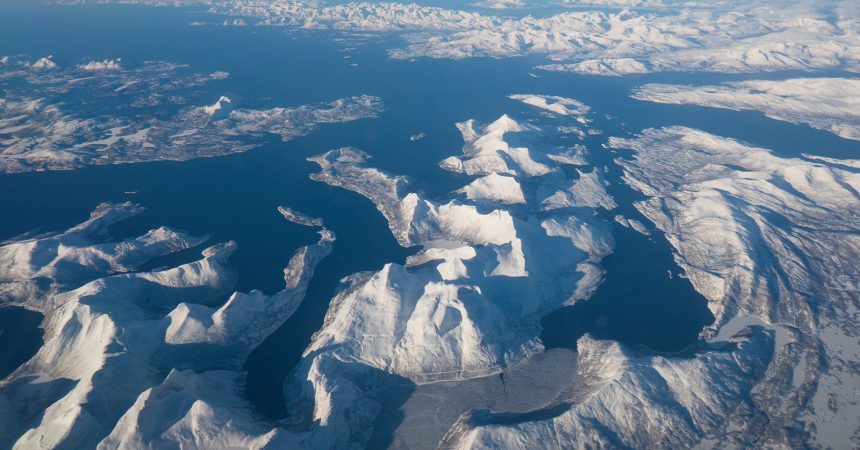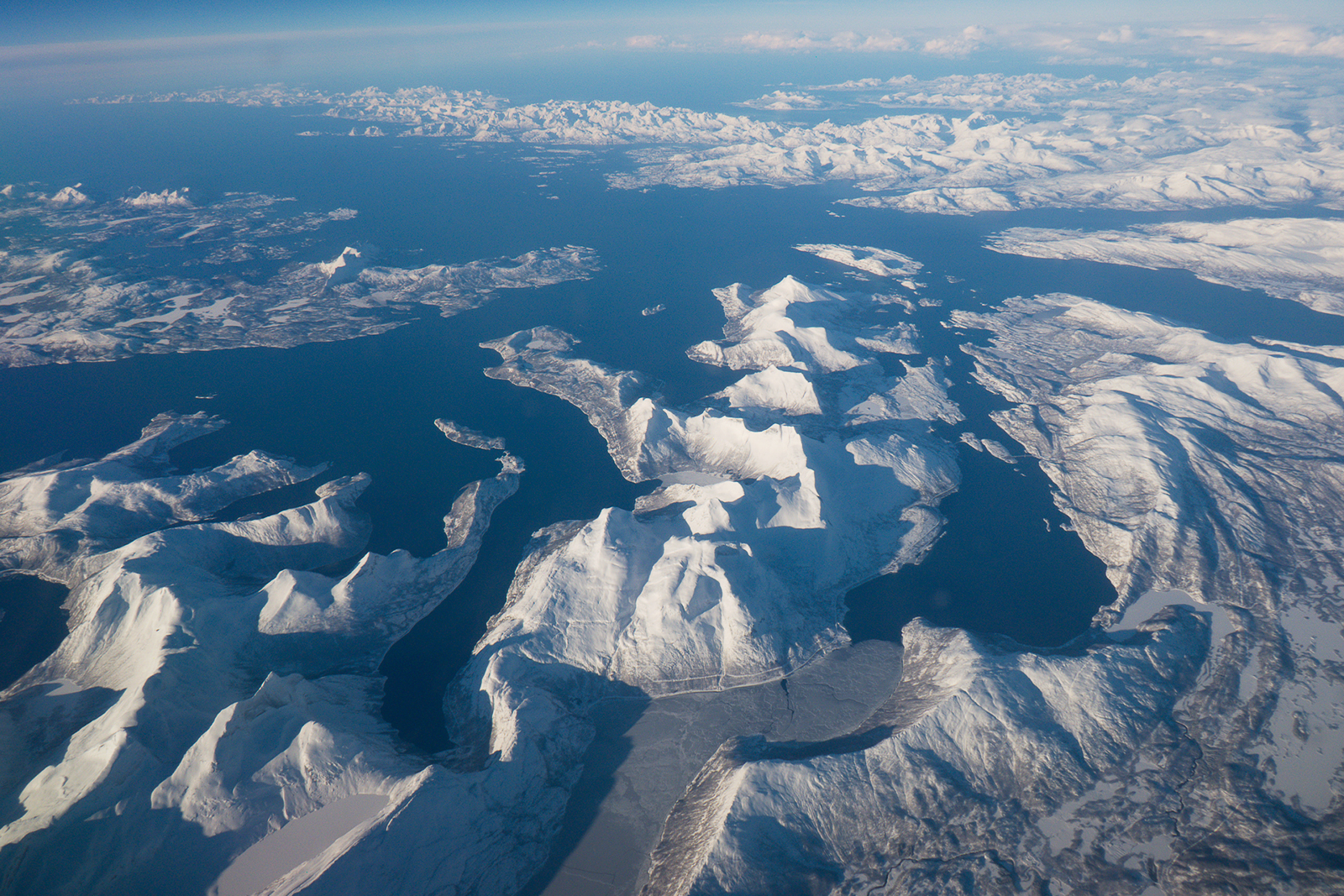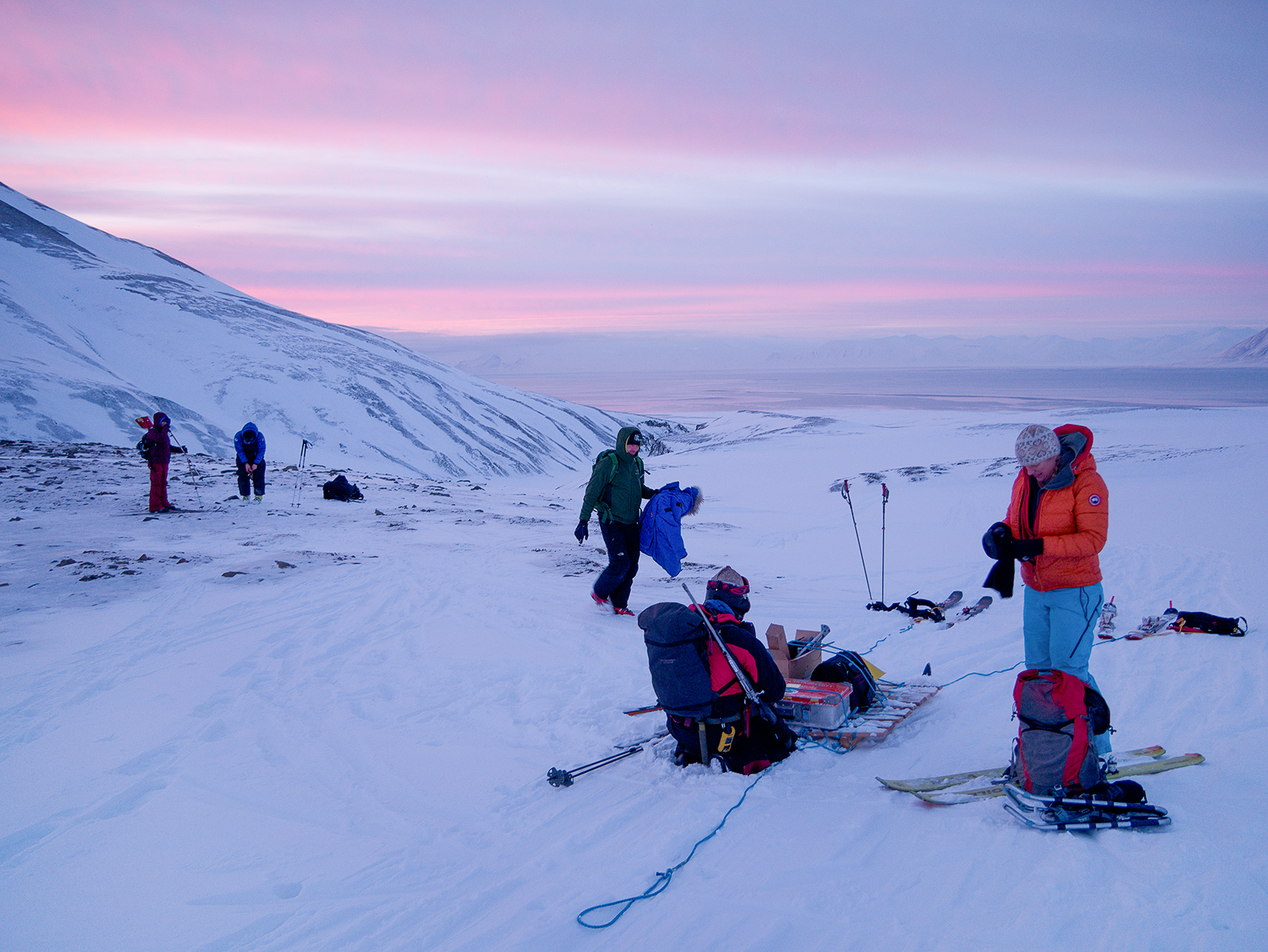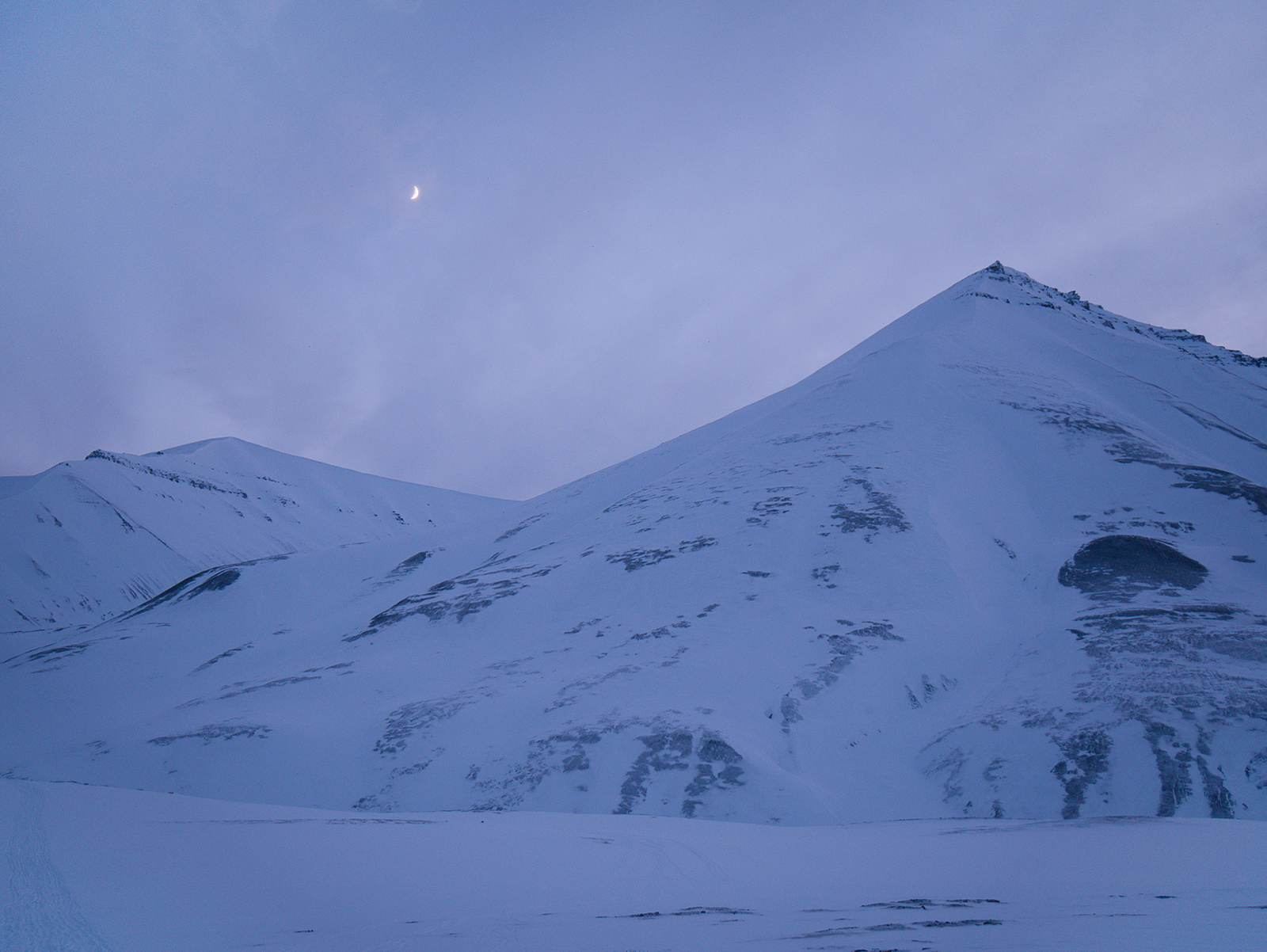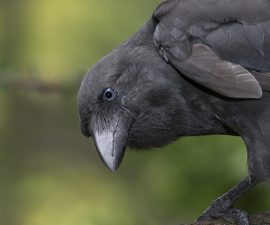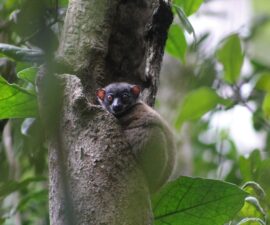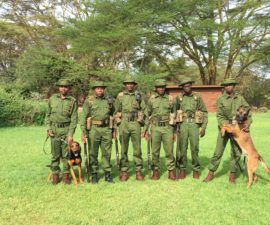In February, a team of biologists from San Diego Zoo Global and Polar Bears International, in collaboration with the Norwegian Polar Institute, visited Svalbard, an island archipelago in the high Arctic (at 71 to 80 degrees north latitude). For a second year, the team deployed cameras to observe adult female polar bears and their cubs when they emerge from their dens in spring. The ongoing research is aimed at understanding how environmental changes may be influencing den emergence and behavior.
Flying from Tromso in northwest Norway to the high Arctic archipelago of Svalbard is definitely a good time to secure a window seat. The beauty of this remote corner of the world—with snow-covered mountains, and glaciers that end abruptly on the edges of fjords— is truly awe inspiring. The deep-blue waters of these fjords are home to a wide array of marine mammals, and they provide a stark contrast to the snow-covered islands. It is simply breathtaking.
We arrived in Svalbard in late February. The sun had just made its first appearance over the horizon after the long polar winter, so the townspeople of Longyearbyen, Norway—the world’s northernmost city—were in quite good spirits, and we felt welcome here.
Soon after our arrival, we heard exciting news that three orcas had been spotted in the fjord near town. And then, of course, it dawned on us: As exciting as the prospect of seeing orcas in that setting was, it was sobering to realize that the orcas were in these fjords in winter because of declining sea ice. Orcas were swimming where polar bears should have been able to walk.
This lack of sea ice in the fjords has direct implications for the polar bear mothers and cubs emerging from their overwinter dens. Watching these families emerge from their dens is the primary focus of our work in Svalbard. By working with our partners at Polar Bears International and the Norwegian Polar Institute, we have configured Arctic-durable camera systems that allow us to capture the timing of emergence and associated behaviors from a great distance. Being able to watch polar bear families without disturbing them provides us with an opportunity to document the impact of sea ice losses at this critical stage of a polar bear’s life. The last thing we want to do is add to their stress!
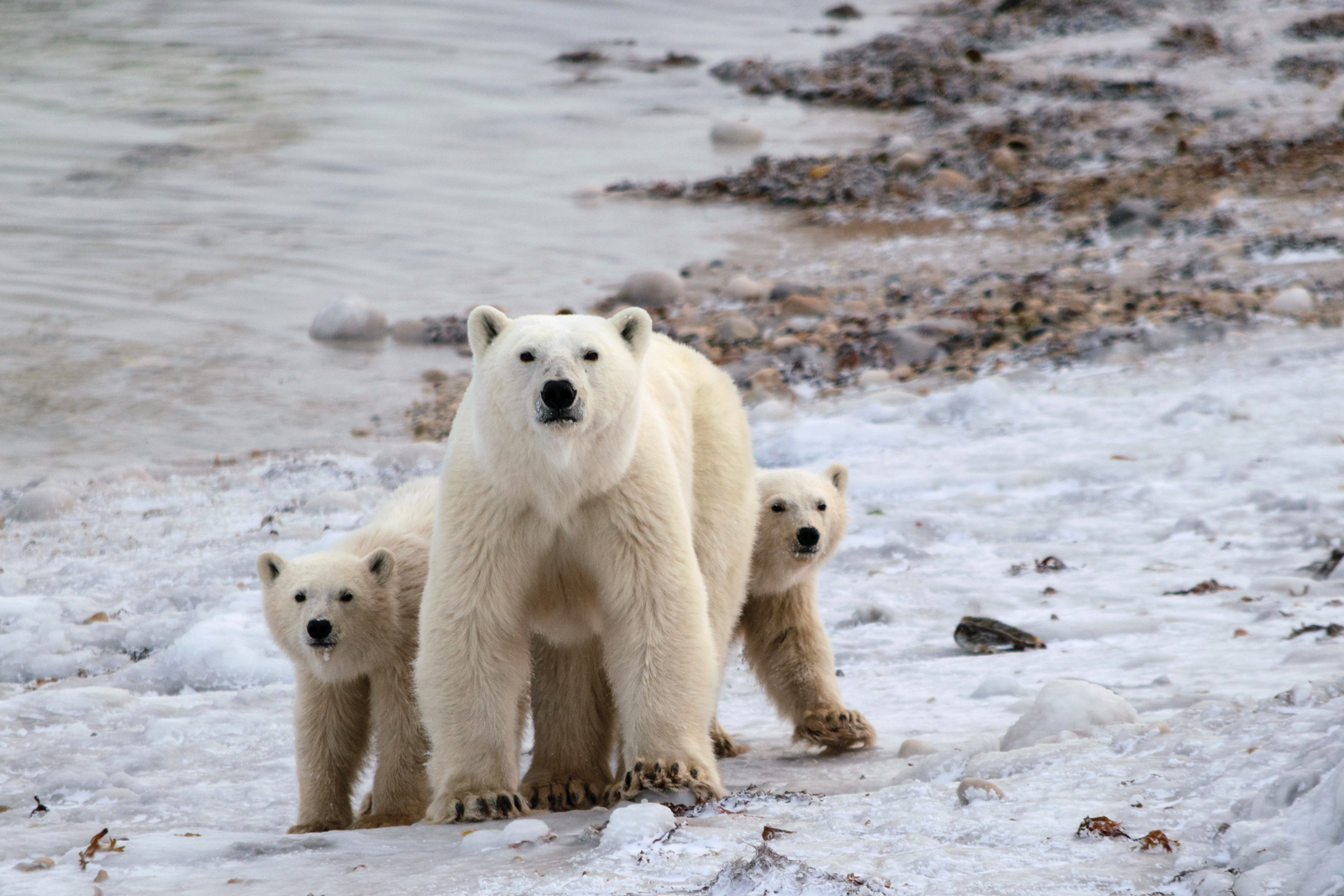
Female and her cubs wait for sea ice along the shores of the Hudson Bay
After months of fasting inside the den and nursing a hungry litter of cubs, the first seal meal that a polar bear mother gets is important. Because polar bears lose about two pounds every day they fast, each day that a mother has to wait to go back out on the sea ice costs her important energy that she and her cubs need to survive. In this way, polar bear survival is tightly linked to sea ice. If orcas are swimming in the fjord, polar bears cannot access the fat-rich seals they depend on for survival. Orcas in the fjord are bad news for polar bears.
Finding hope in this critical situation can be challenging. But the good news is, while reversing sea ice losses will take time, if we all work together to reduce greenhouse gas emissions, we will, in fact, be able to reduce atmospheric temperatures. And that will, in turn, result in increasing sea ice. For polar bears and all life in the Arctic, our effort is critical.
To learn more about how you can make a difference for polar bears, visit polarbearsinternational.org/get-involved/actions-with-impact/.
Megan Owen, Ph.D., is associate director of Recovery Ecology at the San Diego Zoo Institute for Conservation Research. Read her previous post, A Bird’s-eye View of Sea Ice and Polar Bears.

